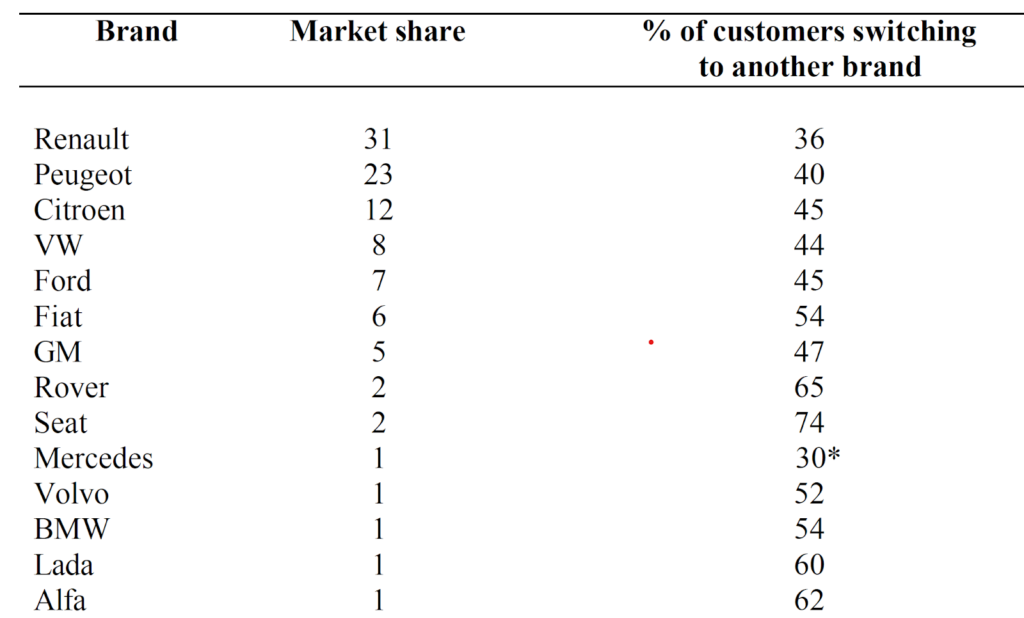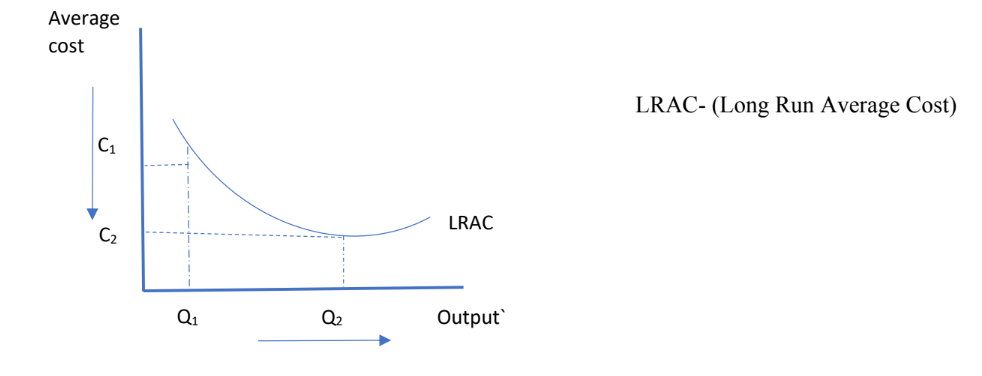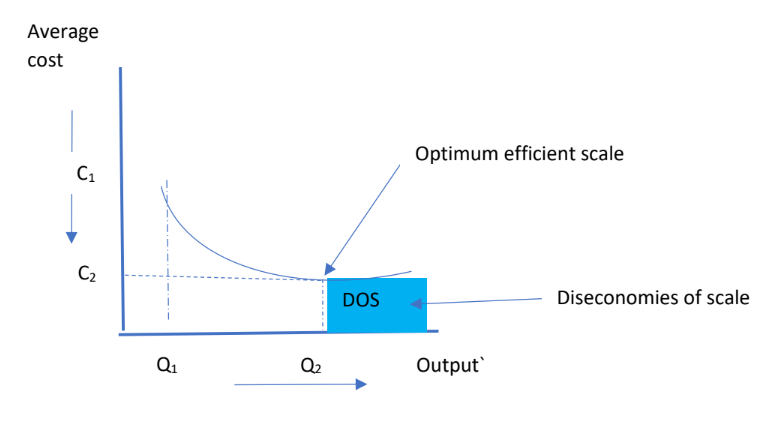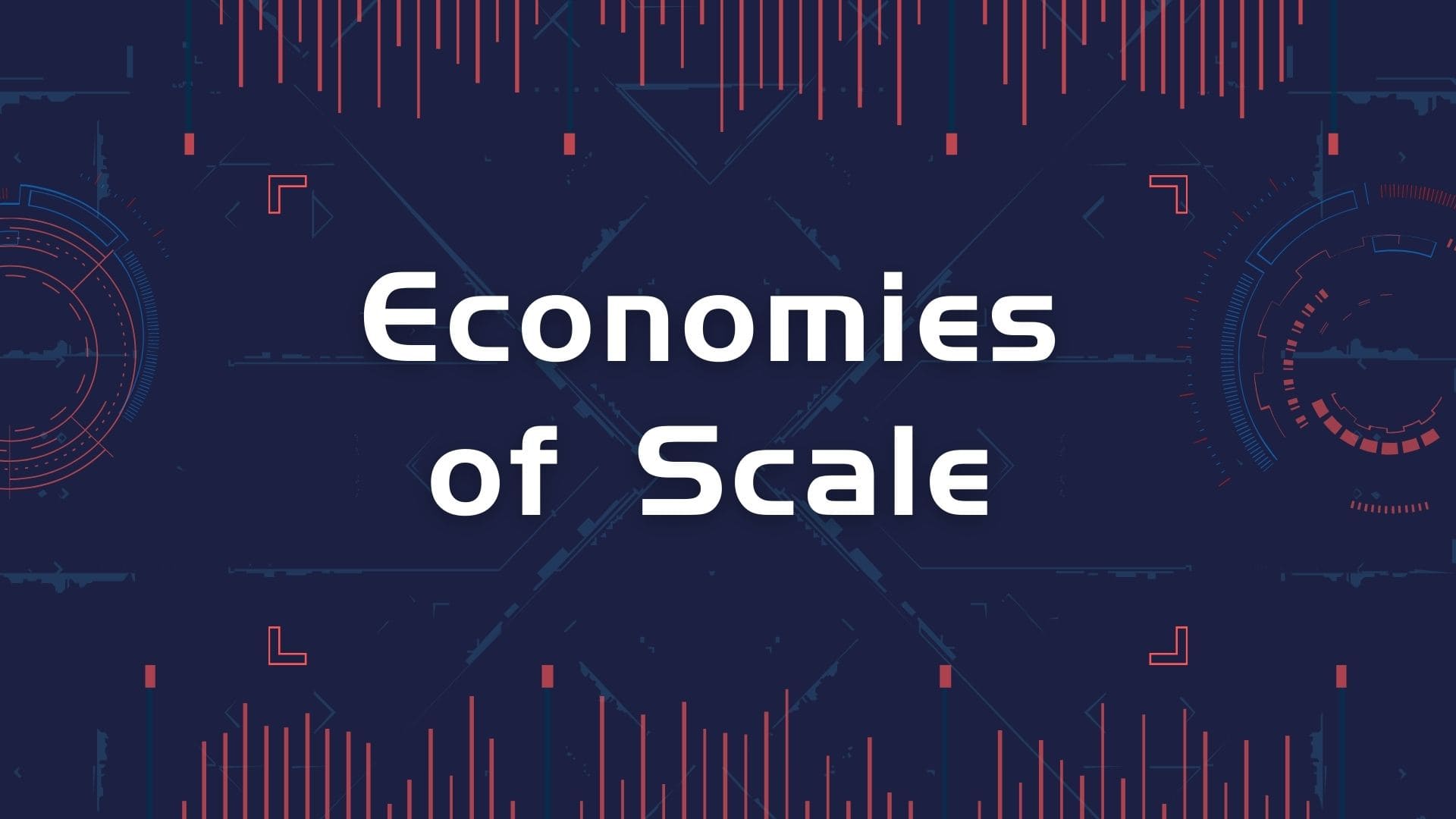There are both fixed and variable expenses associated with a production process. The fixed cost is comparable to a one-time payment, but the variable cost refers to ongoing overhead expenses.
Every company’s top priority should be to locate cost-cutting opportunities so they may increase their profits and gain a competitive advantage in their industry. The idea of economies of scale is one method that may be used to improve resource efficiency and cut down on the costs associated with a process.
What are Economies of Scale?
Economies of scale is the cost advantage when production increases. Here, the cost is spread over more quantities; thus, the average cost per unit drops.
Cost = Fixed + variable cost
= FC + VC
Fixed costs in most cases do not increase with production. For example, the cost of machinery, land, etc.
On the other hand, the variable cost directly relates to the production, e.g., raw materials, electricity costs, etc.
Unit cost = (Total Cost)/Quantity
= (FC+VC)/n
Example of Economies of Scale
For example, the unit cost advantage a carrier will enjoy for having 300 passengers compared with just 25.
Fixed cost: cost of aircraft + wages of the crew and pilots
Variable cost = fuel cost + others

Studies show when small companies merge and become bigger, they enjoy economies of scale in their operations.
EOS is an advantage resulting from repeated processes to deliver a large volume of goods or services.
Types of Economy of scale
Economies of scale can broadly be divided into two groups:
- Internal EOS
- External EOS
Internal EOS
In an internal economy of scale, the organization reduces cost by increasing production. Large industries use this as they can produce larger quantities of items. It helps them grow further. Study shows large industries leverage economies of scale to outwit smaller peers.

Source: MARKETING BULLETIN (massey.ac.nz)
Internal EOS is more common in businesses.
Students from high school understand this concept with the popular LRAC curve shown below.

The EOS curve follows the law of diminishing return; hence businesses must know when production increase is no longer economical.
External EOS
This occurs when two or more organizations work together in the same region to leverage the cost benefit that comes from working together. The manufacturing aspects are based on the same fundamental concept. They can save costs by pooling resources like land, infrastructure, and professional labor, which will result in lower costs for each individual unit of output.
For instance, a number of oil-producing corporations can share the price of using an existing pipeline network by agreeing to split the bills and thereby save money on the cost of installing new lines.
Applications of Economies of Scale
#1. Manufacturing
Take, for example, a business that makes circuit boards for computers. The cost of the board’s investment in intellectual property is a one-time payment; as a result, this expense might be considered a fixed cost. Land, machinery, the production line, and other such things are examples of additional fixed expenses.
Afterward, the EOS comes to play. Since the fixed expenses are the same whether they are produced in little or large quantities, the producer discovers that it will cost less money to create the additional boards.
The fixed costs of a business are amortized across a greater quantity of output. When a company increases its output, it opens the door to greater opportunities for specialization, greater efficiency, and greater competitive advantage. They also have to deal with the learning curve, which is the period of time that passes between the first try and become an expert. Increasing production help shorten the learning curve.
When it comes to making the most of their raw materials, larger companies typically fare better than their smaller counterparts. Large companies are likely to generate a greater number of by-products, many of which have the potential to be converted into useful ends by capitalizing on the quantity. For instance, a significant quantity of bagasse produced by the sugar industry represents the potential for an alternate source of power.
#2. Transportation
The size of an airline, the number of locations it serves, and the frequency of its flights can each have an impact on the company’s revenue. EOS benefits large airlines since their fixed expenses may be distributed among a greater number of passengers.
For example, if an airline flies 50 passengers from Johannesburg to the US compared with 500 passengers, the business discovers that the same number of pilots is involved as other ancillaries; however, the 500-carrier will optimize more on the cost. Large airlines typically receive more favorable pricing from their various suppliers, including aircraft manufacturers, catering services, and so on.
#3. Program Management
A program is a collection of related projects that are coordinated and managed in such a way as to provide benefits that are not available when managing projects individually. They are able to pool their resources and their technical expertise.
The interdependencies amongst these projects, such as procurement, training, and development, can identify economies of scale. The projects can take advantage of the group’s volume buying power by working together. These interconnected tasks are best handled by a cohesive department, which creates space for effective bargaining and cost reductions.
#4. Education
The addition of students to a school means less cost per student as the fixed cost (e.g., wages of teachers) is the same. When the total average cost is at its lowest point on the LRAC curve, the EOS is at its highest possible point. More education for the tax dollar” is in fulfillment of EOS.
A school needs additional enrollments to enjoy EOS. It has been demonstrated that there is a connection between a company’s financial performance and the number of students it has.
According to research conducted at the University of Birmingham, the cost per unit is increased by a factor of two when comparing groups of 100 and 500 students with a similar selection of subjects.
Diseconomies of Scale

Economies of scale does not tend to infinity. Like the law of diminishing return, it begins to fail at some point. When this happens, increasing production can actually end up being counter-productive because costs start to go up. As seen in the above graphic, firms are now experiencing diseconomies of scale rather than economies of scale.
Summary
Businesses may be able to save expenses and enhance their technical advancements by making use of economies of scale. Although the notion of size runs counter to the lean model, volume is still important, and size can eliminate a significant portion of expenditures.
References
Research in Rural Education, Fall 1990, Vol. 7, No.1, pp. 9-15
Survey of the Empirical Evidence on Economies of Scale | NBER
EconStor: Economies of scale: A survey of the empirical literature
Caleb A. Smith: Survey of the Empirical Evidence on Economies of Scale, Out-of-print volume, National Bureau of Economic Research, Princeton University Press, 1995. pg 213-238
